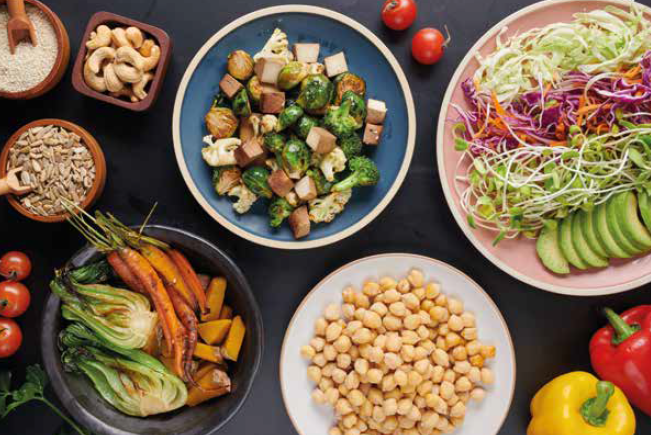
Researchers have found that many VID-19 patients developed long COVID symptoms such as difficulty in sleeping, fatigue, hair loss and chest pain after the infection has gone. They found links between long COVID and gut dysbiosis. Dysbiosis is the imbalance of gut microbiome, meaning there are less good bacteria and more bad bacteria in the gut.
Good gut health is EXTREMELY IMPORTANT!

Instead of taking daily probiotic supplement, it is more effective to eat prebiotics which are like fertilizers that stimulate the growth of the good bacteria in our gut.
There are three types of prebiotics:
Fiber - Sources: whole grains, legumes, fruits and vegetables, nuts and seeds, tubers
Resistant starches - Starches lose their original structure due to cooking. A new structure is formed if the starches are later cooled, and the new structure is resistant to digestion, and therefore provides excellent fuel for the gut microbiome. Examples of resistant starch: Oats, barley, beans and legumes, cooked and cooled rice/potato/pasta, green plantain/banana. Reheating will not remove resistant starches.
Polyphenols - Polyphenols are compounds that come from plants only. Foods that are high in polyphenols include: spices and dried herbs, dark coloured berries, black currants, plums, hazelnuts, pecans, flaxseeds, olives and artichokes. Cocoa contains polyphenols but it also contains caffeine and theobromine, which are stimulants and diuretics.
The diversity of plant food we eat leads to an increase in bio-diversity of our gut microbiome. Other than food, healthy lifestyle such as regular exercise and adequate sleep can increase diversity as well. Try to aim for eating more than 30 types of whole plant food a week in order to add diversity to gut microbiome.
Prebiotic Superfood Stew for Better Gut Health

Ingredients:
- 3 cloves of garlic
- 600g sweet potato
- 400g leeks
- 1 can of (400ml) coconut milk, or substitute with other plant milk of your choice mixing with ½ teaspoon of ground flaxseed as thickener
- 1 can of (400g) diced tomatoes, or 2 cups of fresh chopped tomatoes, peeled
- 250g precooked brown rice
- 1 can of (400g) cooked red kidney beans, or chickpeas
- 1 can of (400g) cooked lentils
- 1 lemon
Instructions:
- 1. Chop leeks, sweet potato into similar sized pieces. Peel and finely dice the garlic. Give the leeks a good wash as there is often sediment hidden in the green of the leeks. Drain and rinse the beans and lentils.
- 2. Heat a wide bottom non-stick pan and sauté chopped leeks with water or vegetable broth for 2-3 minutes. Add the garlic and sweet potatoes with a good pinch of salt. Mix well and cook for another 1 minute. Add 50ml of water and put the lid on, leaving to stem for 7 minutes and stirring occasionally to avoid sticking - if it starts to stick, add another 2 tablespoons of water and mix well.
- 3. Once the sweet potatoes are soft and cooked, add in cooked lentils and beans and mix well.
- 4. Add in the chopped tomatoes, plant milk and brown rice along with the zest of half the lemon and the juice of½ the lemon.
- 5. Taste and adjust the seasoning to your liking by adding more salt, tamari or soy sauce.
Other Foods with a High Prebiotic Content
Vegetables
- 1. Garlic
- 2. Onions
- 3. Asparagus
Legumes
- 1. Chickpeas
- 2. Lentils
- 3. Red kidney beans & baked beans
Fruits
- 1. Bananas
- 2. Apples
Cereal grains
- 1. Whole oats
- 2. Barley
Nuts and Seeds
- 1. Almonds
- 2. Flaxseeds

















